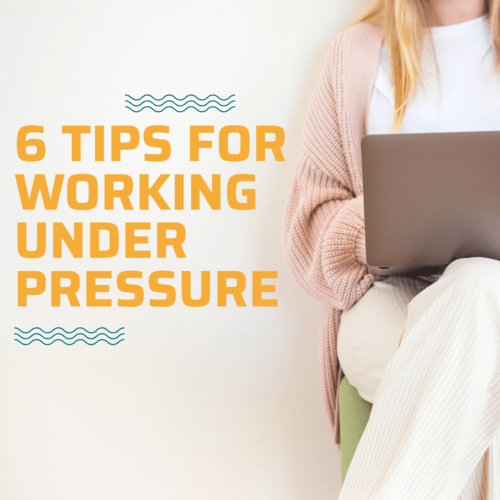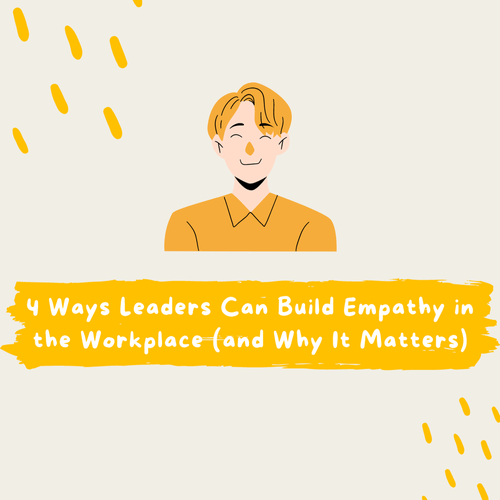Many organizations are now looking beyond traditional strategies to manage their employees and are now focusing only on qualities that build authentic leadership. One of the skills in great demand for truly authentic leaders is empathy
What does empathy mean?
Empathy is the ability to understand and be sensitive to another person’s feelings, thoughts and actions.
Essentially, it means being able to put oneself in the other’s shoes and imagine how they must be feeling in certain situations and why they act the way they do.
What is an empathetic leader?
An empathetic leader is one who has a genuine interest in his/her team members’ lives, the challenges they face, and their overall feelings.
This kind of leader makes an effort to understand their situations and what they are going through, in order to offer support and help. Empathy is a key element of servant leadership as well although not all empathetic leaders practice servant leadership.
Overall, an empathetic leader interacts with others in a way that leaves them feeling safe and cared for, and as though they have a connection based on trust.
Defining Empathy in the Workplace
Empathy means having the ability to relate to other’s thoughts, emotions and experiences. When we have empathy, we react more compassionately and have a deeper understanding of how someone feels.
Empathy is a powerful tool in any relationship — not just work. By temporarily taking up residence in somebody else’s perspective, you’ll find it easier to solve conflicts and create solutions that work for everyone involved.
In the workplace, establishing empathic relationships with colleagues can improve performance and satisfaction, and eliminate the risk of conflicts for more efficient decision making. These empathic connections usually have four qualities:
- Both parties openly communicate about workplace problems and concerns.
- Neither party is interested in conflict, judgment and criticism.
- Both parties respect the other’s point of view.
- The focus shifts to a win-win strategy, removing tension and conflict.
How Empathy Fuels Productivity
Recent polls show more than half of employees state they would consider leaving their job if company leaders didn’t show empathy to staff needs.
Although an important factor, the benefits of empathy extend far beyond employee satisfaction to all corners of a business — including its bottom line.
It decreases conflict
When there’s a common understanding of emotions and motivations, the risk of conflict decreases significantly.
In a conflict situation, it can be tempting to look for someone to blame. However, pointing fingers can escalate situations, leading to bad feelings and a notion of victimhood. By making someone the perpetrator rather than working towards mutual understanding, you waste time and energy — the definition of unproductive.
When leaders focus on embedding a culture of empathy, collaboration increases, driving productivity and making solutions easier to find.
It makes giving and receiving feedback easier
Giving and receiving feedback at work is an important element of productivity, as it gives us the opportunity to improve. Empathy allows leaders to gain an overall understanding of why certain areas aren’t up to scratch. Taking a compassionate and empathic approach to feedback gives employees the space to be open about their downfalls.
For example, by asking “How are things going for you?” employees have the chance to open up on areas they’re struggling with, which could be hindering their productivity. Leaders can then work on finding a way to overcome these barriers to productivity, promoting an environment where self-improvement is central.
It reduces work-related stress
Fostering empathy in the workplace can help create a more collaborative environment and strengthen work relationships, which works to reduce stress levels. In fact, research has shown that managers with good relationships with their employees, who in turn understood their managers’ challenges, experienced significantly less stress.
Employees are also less likely to experience burnout in an empathic organization. Through a lens of empathy, managers can check in with employees regularly, giving employees the chance to talk. Instead of instilling fear and stress in employees, empathic leaders can pivot and adapt their policies to focus on wellbeing.
How to Improve Empathy at Work
Here are four simple steps you can take to ensure your company is cultivating empathy:
1. Actively Listen
In a busy work environment, it can be easy to passively listen while your mind is on something else. However, this isn’t productive. Try to put your deadlines, tasks and problems aside to concentrate on what the other person is really saying. Look out for non-verbal cues as well.
By putting yourself in their position, you can imagine how they’re feeling and are better equipped to find a solution.
2.Recognize your bias
Your unconscious bias could be making you react in a certain way, impacting your decision making. Although it’s difficult to unlearn, it’s easier to keep your bias in check when you’re aware that it exists.
This awareness prevents you from dismissing someone’s feelings simply because of a preconceived notion of how you think they act, leading to a more empathic environment.
3.Work with your team
By better understanding your team’s workload and the frustrations they feel, you can empathize with their needs and worries. It’s also a lot easier to spot the signs of burnout when you work alongside your workforce, which helps prevent disengagement.
When remote working, you can do this by checking in regularly to see how people are feeling regarding their workload and simply asking how their day is going.
4.Avoid making assumptions
Giving employees the benefit of the doubt before passing judgment on their performance can be a powerful way to demonstrate empathy.
Jumping to conclusions is the exact opposite of empathy, as there’s no patience or understanding involved in making bold assumptions. Through open dialogue, on the other hand, you can get to the root of the issue and solve it faster.
How can effective incorporation of empathy in the workplace improve company culture?
Empathy makes it possible for understanding, acceptance, and appreciation of each employee in the workplace. It’s a key component of functional, positive relationships. The more that leaders and employees practice this skill in the workplace, the more cohesive, diverse, and harmonious the company culture can become.
We offer webinars, workshops, and seminars for organizations on mental health in the work place. Click the button below to find out how we can help your company.



